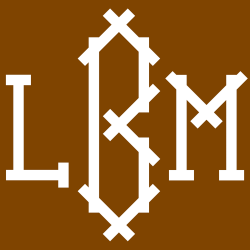For Valentines Day, Nurse Rachel gave me a copy of Dissection: Photographs of a Rite of Passage in American Medicine 1880-1930. It might not seem romantic, but it sure is interesting. In the 19th century, anatomy professors had a hard time legally obtaining bodies for their students. So they hired “resurrectionists” to dig up recently buried bodies from graveyards. The process was shrouded in secrecy. Professors and janitors guarded the dissection room and students were expelled if they divulged the identity of their subjects.
Despite all of this secrecy, there was a strong compulsion to document and commemorate the process. As photography became more accessible in the 1880’s, medical students across America began posing for group portraits in front of their cadavers. Through the 1920’s, this genre of medical photography became a quasi-ritual. Of the hundred or so pictures compiled in Dissected, many share remarkable consistencies. To me the most fascinating stylistic attribute is the phrases students would write in chalk on dissection table:
Happy Valentines…
![]()

Interesting sense of humour. Particularly liked the last one. ‘Students dream’. Maybe should have read ‘revenge is sweet’.
Like the website and its very interesting topics of discussion. Books being my favourite possession.
Kev
PS The second pictures chalked statement ‘Know thyself’, is one of two inscribed phrases from above the gate to the Temple of Delphi. The other is ‘Nothing in Excess’. Hmmm?
My alma mater, the University of Louisville, was particularly well-known for the lengths to which medical students would go to obtain cadavers. There are accounts of them organizing nighttime parties armed with rifles to local cemeteries — one appears in Erik Larson’s “The Devil in the White City.” “I tell you, we must have bodies,” wrote a senior University official after one such graverobbing party had been foiled. “If we can’t get them any other way we will arm the students with Winchester rifles and send them to protect the bodysnatchers on their raids.”
The infamous Burke and Hare took it a stage further and skipped the graves http://en.wikipedia.org/wiki/Burke_and_Hare_murders
For Valentines Day, I was given Georgian Spring, from the most beautiful girl in England.
Fascinating. Look how they don’t even wear masks! And they’re all so well dressed. Wow.
These photographs are incredibly striking. Not only are the photographs intriguing, but the stories behind them are just as, if not more, interesting. The fact that these events were documented is fabulous. The use of text is very ingenious and only adds to the images. I was particularly struck by the statement “Her loss is our gain.” I first read it and thought, “How horrible…” but it is a mere true statement. Knowing that these aren’t just staged images with fake dead bodies, but that they actually occurred, makes them even more special. People really did this. This is history. I wish there were more images here. I’m definitely going to be making an investment in this book.